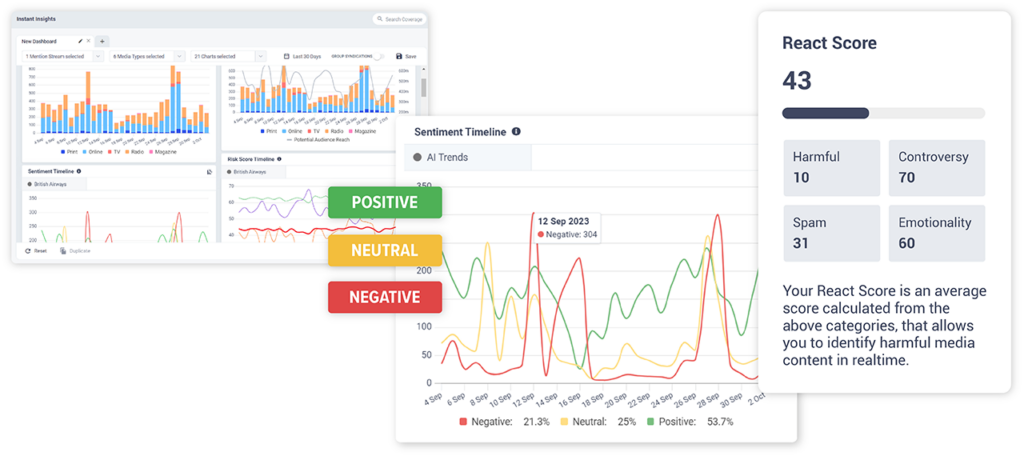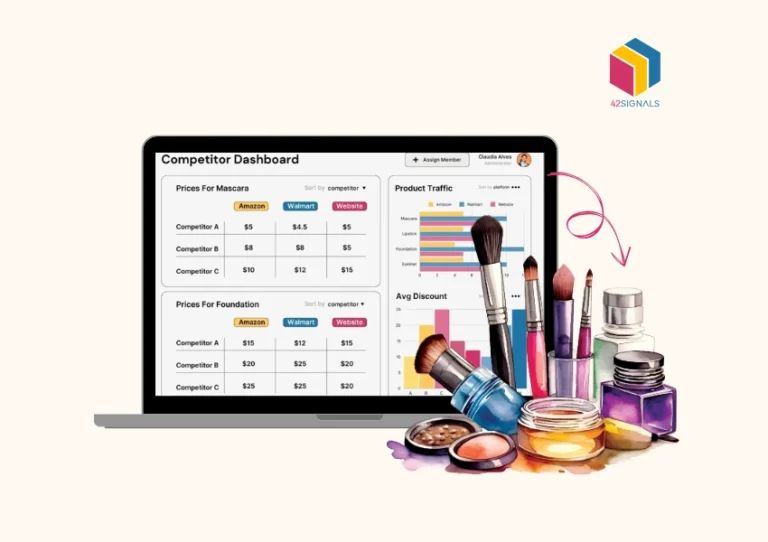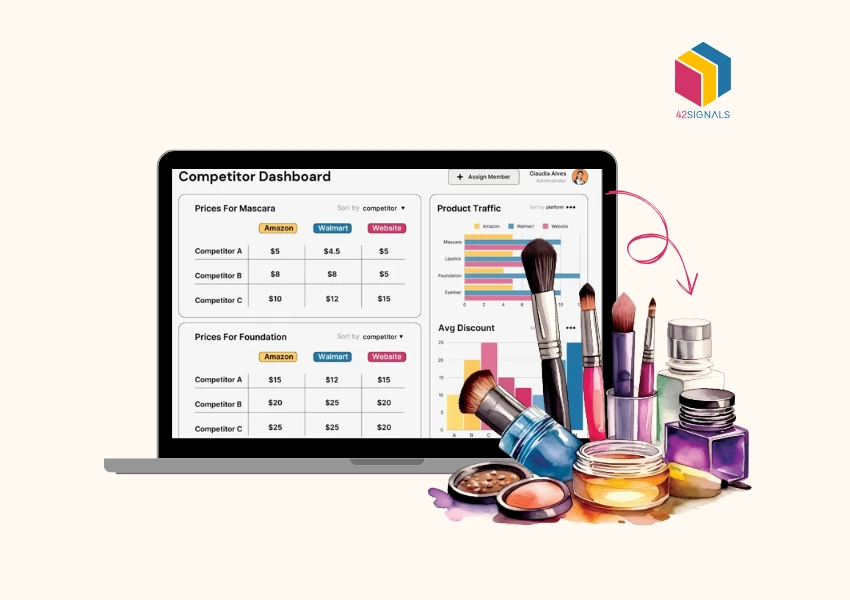What’s the need for brand sentiment analysis? Budding brands face intense competition for customer attention and in India alone, the number of digital-first brands has surpassed 600 as of December 2022, according to Statista.
In today’s crowded marketplace, emerging digital-first brands, or D2C brands, must compete with hundreds of other companies to capture the attention of their target audience. With so many options available, it’s essential for these brands to prioritize their brand reputation and stand out from the competition.
Brand sentiment analysis is a technique that assesses the attitudes and opinions customers have towards a brand or product by analyzing their online interactions. This includes gathering customer feedback from various sources such as online shopping platforms, social media platforms, product review websites, and other digital text. With this data, sentiment analysis can provide insights into a brand’s overall performance and reputation among its target audience.
Data on customer sentiment provides a firm tether between the brand and the end-user that can be tugged upon (through corrective measures in the case of harsh sentiments) or loosened (continuing to deliver high-quality experiences that maintain happy sentiments) depending on where the sentiment lies on a scale of “positive” “negative” or “neutral” feedback.
So, what value does customer sentiment analysis bring to the table? And how does it help manage a brand’s reputation? Let’s find out.
Monitoring your Brand’s Pulse with Brand Sentiment Analysis
“People will forget what you said, people will forget what you did, but people will never forget how you made them feel”
– Maya Angelou
This powerful quote by Maya Angelou correctly depicts the necessity of customer sentiment analysis. Customers today are vocal about what they love, what they hate, and what they care about. In an influencer-driven generation, 92% of customers trust an influencer more than an advertisement, a Nielsen’s survey finds.

Image Source: Cision
Brand sentiment analysis allows you to listen to your company’s pulse – whether it’s healthy or diagnose potential issues – based on AI and machine learning algorithms. It allows companies to keep an ear to the ground and extract insightful information from conversations surrounding their brand.
In 2017, United Airlines faced severe backlash a video of a passenger forcibly removed from an overbooked flight went viral. This immediately enraged the mass audience generating widespread negative sentiment on social media and calling for a boycott of the airline. The incident prompted a public apology from the CEO and an investigation into how such a situation occurred with measures taken to prevent it from happening again.
While this may be considered a drastic example, it still goes to show how brand monitoring and customer sentiments can have an adverse impact on organizations big or small. Hence, continuously monitoring your brand’s pulse is critical.
Brand Sentiment Analysis to Manage Your Brand’s Reputation
A chart created by BrandMentions depicts the different emotional terms and how they attribute to the overarching feeling of sad, mad, scared, joyful, peaceful, and powerful. As most comments and reviews written by consumers are emotionally driven, two terms help categorize the sentiment.
Sentiment polarity indicates if the feelings are largely positive or negative, whereas sentiment magnitude also known as sentiment intensity shows how strong the customer’s feeling is about that sentiment.
A study on the subject, mapping the differences between polarity and intensity can be found here.
Improvements Through Listening

Image Source: Brand 24
Gaining an understanding of how your product makes customers feel is an integral part of the feedback loop. Knowledge of positive and negative sentiments can be used to make improvements in product specs, customer experience, and even user interactions.
Knowing if an employee was rude to a customer, if the ordering experience was difficult and lengthy, or even if the product didn’t match expectations, can help implement reversive measures which are possible only through brand sentiment analysis.
Managing Online Reputation
Sentiment polarity and intensity allow brands to engage with customers in a better manner. Knowing the pain points they face, corrective actions via better advertising, communication, and replies, can be taken before the situation snowballs and becomes difficult to correct. The new-age customer prefers honest communication and studies have shown that consumers prefer interacting with brands that are transparent. This in turn fosters loyalty and allows companies to even reverse negative sentiment.
Crisis Aversion
Several past incidents pertaining to large and small companies have had a huge impact on how customers interact with and feel about the brand. Starbucks for instance went viral in 2015 over a racially charged message written on a coffee cup in bad taste. It was a PR nightmare.
Ola recently had to deal with their exploding bike crisis. Every other month there are several businesses that experience the “Starbucks incident” that cannot always be averted, but the right action taken at the right time can ease the situation.
Brand sentiment analysis can be a valuable tool for brands to monitor and manage their online reputation. By continuously analyzing customer feedback, including negative reviews or commentary, brands can identify potential issues before they escalate into major problems.
Through sentiment analysis, brands can assess the category of damage and the associated response required, such as a public apology, compensation, or corrective action. This proactive approach allows companies to take preemptive corrective measures that can demonstrate their commitment to customer satisfaction and build trust with their audience.
Lucrative Expansion
Brand sentiment analysis can also be used in product development to identify new product avenues that customers desire. By analyzing what customers say and what they want, brands can develop new ideas for products. Sentiment analysis can also be used to track competitor behavior and keep tabs on their successes and failures. Based on this data, brands can diversify into new segments or expand in different locations, knowing there’s a high chance for success.
Conclusion
Negative sentiment can spread quickly on social media, causing significant damage to a company’s image and bottom line.

By adopting brand sentiment analysis, businesses can stay on top of their reputation and address negative sentiment in a timely manner. Through swift and effective responses, companies can turn negative situations into positive outcomes, enhancing their reputation and building customer loyalty.
This can strengthen the brand’s reputation and ensure long-term success in a competitive market.
Frequently Asked Questions
What is brand sentiment analysis?
Brand sentiment analysis is the process of analyzing online conversations, reviews, social media mentions, and customer feedback to determine how people feel about a brand. It measures whether the sentiment is positive, negative, or neutral, helping companies understand their brand image in the eyes of the public.
Why it matters: It allows businesses to track reputation, respond to issues early, and align marketing efforts with customer expectations.
Example: A spike in negative sentiment after a product launch may indicate flaws in the product or marketing campaign that need addressing.
What are the four main steps of sentiment analysis?
The typical sentiment analysis workflow includes:
- 1. Data Collection
- Gather data from sources like social media, review sites, surveys, and customer support transcripts.
- 2. Text Preprocessing
- Clean the data by removing noise (e.g., emojis, special characters), and normalize language to prepare for analysis.
- 3. Sentiment Classification
- Use AI, machine learning, or keyword-based methods to classify text as positive, negative, or neutral (or by emotion like joy, anger, etc.).
- 4. Interpretation & Reporting
- Visualize insights through dashboards or reports, and take action based on sentiment trends (e.g., adjusting messaging, resolving complaints).
What are sentiment analysis examples?
Sentiment analysis is used across industries. Here are a few examples:
- E-commerce:
- Analyzing product reviews to determine overall satisfaction (e.g., “This shirt is amazing – fits perfectly!” = positive sentiment).
- Social Media Monitoring:
- Brands track real-time sentiment during product launches or PR events (e.g., Twitter reactions to a new iPhone).
- Customer Service:
- Chatbots detect angry or frustrated messages and escalate to human agents.
- Competitor Benchmarking:
- A brand compares its sentiment score with competitors to see who holds a more favorable image in the market.
What is brand perception sentiment analysis?
Brand perception sentiment analysis goes beyond general sentiment to measure how consumers perceive a brand’s identity, values, and reputation. It focuses on emotional and qualitative insights tied specifically to brand attributes, such as:
- Trustworthiness
- Innovation
- Affordability
- Customer service
Example: If a brand markets itself as “eco-friendly,” sentiment analysis can detect whether customers agree with or doubt that claim based on the language used in online discussions.
Why it’s valuable: It helps brands understand the gap between how they want to be seen and how they’re actually perceived — allowing them to refine messaging and positioning.







